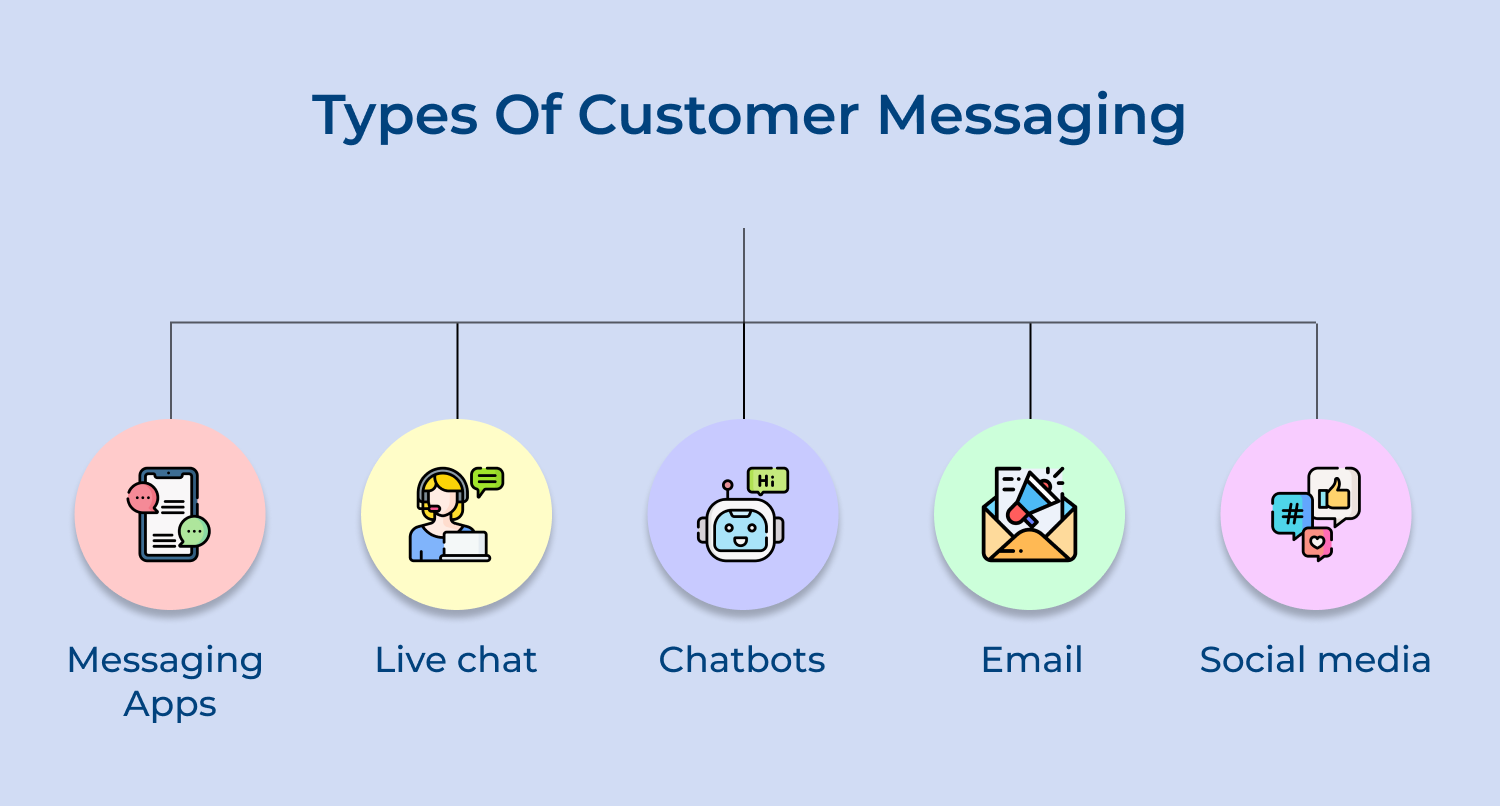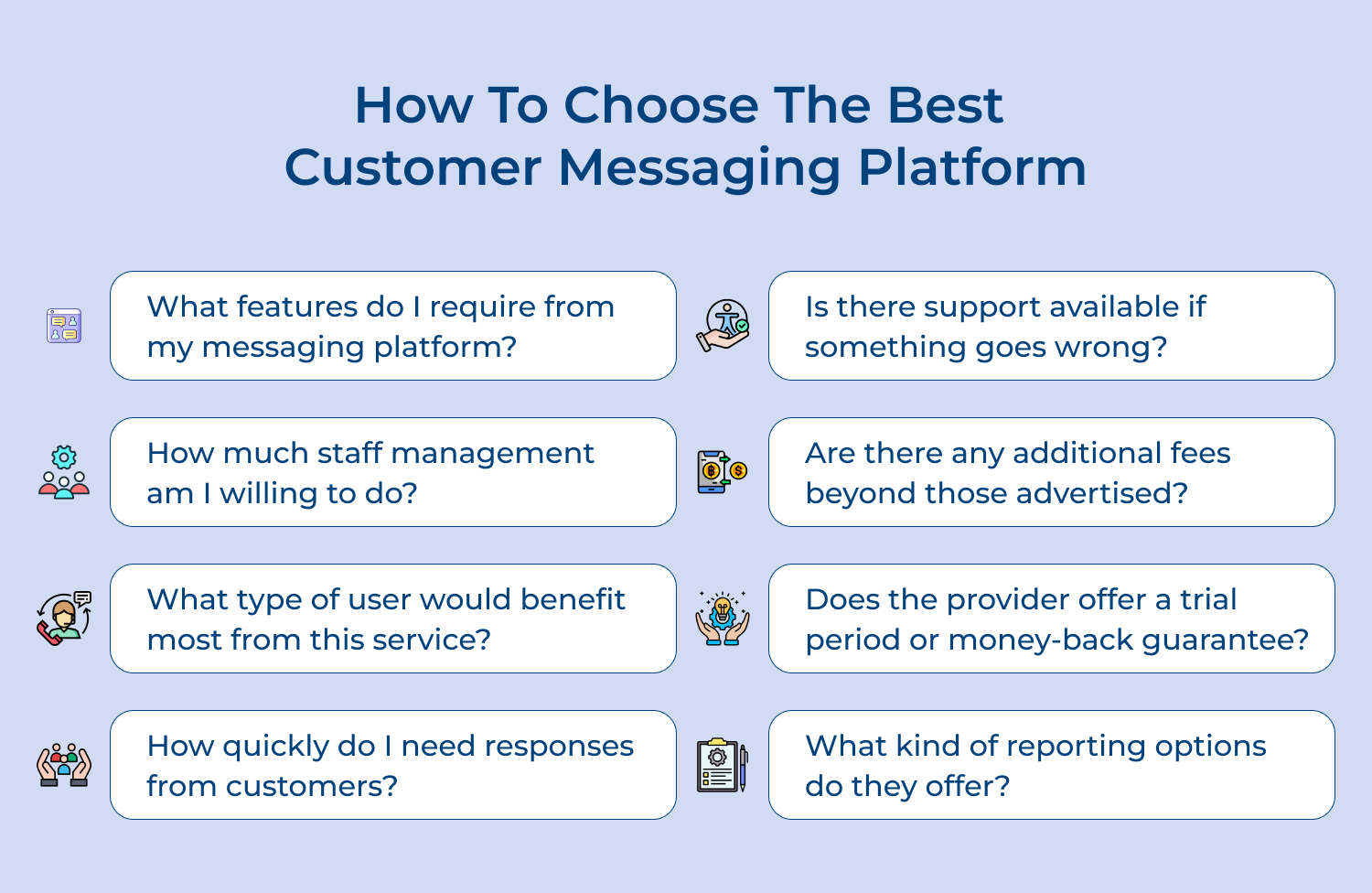1. Make Your Messaging Clear and Consistent
Brand dilution could cost companies $10 million or more each year
When it comes to engaging your people in your brand, you need them to deliver on your corporate brand promise in a way that’s authentic to them.
Having clear and consistent messages across customer communication channels is key for effective customer messaging. It helps your customers to understand exactly what you want to convey them.
Ensure that your customers are able to understand your message, even when coming from different sources like emails, webpages, social media, or any other medium of customer interaction that you use. It will also make it easier to relate various messages together and have a better understanding of what your product or service offers.
Client messaging best practices:
- Conduct research to ensure your branding stays consistent throughout each channel.
- To gauge how effective client messaging might be, lean on your customers for feedback
- Leverage tools to make your customer messaging platform more effective.
2. Personalize Your Messages
Using personalization techniques such as dynamic content, segmentation and tailored messaging can help boost engagement rates with customers.
Customers appreciate personalized attention and will be more likely to respond positively when they receive messages catered specifically towards them or their interests.
Personalizing customer messaging is a powerful way to build trust, rapport, and loyalty with your audience. It shows that you care about their needs, preferences.
Customer messaging best practices:
- Use AI-enabled chatbots to help determine the right time to send certain messages based on user data.
- Implement live chat apps to respond to customer queries instantly and boost sales conversion.
- Follow up and follow through with your audience by updating them on their requests or issues and delivering on your promises.
3. Include Quality Content in Client Messaging
Products don’t sell themselves. A unique copy is a top salesperson that should address the customer’s concern and guide them to the checkout button. 60% of people are inspired to seek out a product after reading content about it.
Quality content is very important as it is the content that influences people to take action. As content marketing gets three times as many leads as paid ads
Quality content can generate over three times as many leads as outbound marketing and costs 62% less.
It can create a positive experience for customers as they learn something new from trusted industry sources and simultaneously keep up-to-date with latest trends related to your product or service offerings being discussed in the same message thread.
Client messaging best practices:
- Including quality content such as blog articles, infographics, eBooks etc., can help reinforce your brand’s message and values to the customer while also providing useful information or resources related to the subject matter you are trying to convey across customer channels.
- Craft compelling headlines that convince the customer to take the expected action.
4. Optimize Your Message Channels & Platforms
Optimizing your messaging activities for different channels helps establish consistency and build stronger customer relationships over time by allowing users to experience continuity across multiple platforms like email newsletters, social media networks etc.
By effectively analyzing usage patterns among each channel/platform capability’s capabilities & audience attributes; you can customize marketing campaigns accordingly & deliver optimized performance results at both macro & micro levels simultaneously!
Customer messaging best practices:
- Understand the constraints of your customers.
- Be less formal, more conversational.
- Know when you need to switch to another channel.
5. Monitor Customer Feedback & Act Quickly on Complaints
Acquiring and acting on customer feedback/complaints is one of the best way to develop lasting relationships with your customers.
The most impactful experiences that businesses can create with their messaging efforts come from actual feedback from customers themselves in the form of complaints or suggestions — which highlights areas where improvements need immediate attention within any existing workflow process etc.
By actively listening & responding appropriately (within reasonable time frames); businesses demonstrate commitment towards current & potential clientele — ultimately leading to overall satisfaction of all stakeholders involved.
Client messaging tips:
- Practice active listening when a customer is providing feedback about your product, services, and support.
- Analyze the feedback and authenticate how much it is relevant as well as identify the plan of action to implement the feedback.
- Thank your customers for providing feedback and make them feel valued by implementing their feedback.
6. Automate Responses where Appropriate
Although automation can often seem impersonal due comparison to manually engaging replies from a human representative. But certain aspects such as repetitive tasks or maintaining general store inventory should be automated where appropriate.
It saves time while simultaneously responding accurately with speed and efficiency.
Not only can automation conduct intuitive conversational assistance (with AI involved) but allows someone working day shift access back office operations at night — potentially saving an organization thousands in staff overheads each year!
Customer messaging tips:
- Automate the common FAQs by deploying AI enabled bots for providing instant response.
- The complex queries can be directed to the human support for resolution.
7. Monitor Performance & Measure Results
It is very important to measure in order to improve.
After establishing a strategy for successful customer messaging it’s important for you to monitor performance both internally and externally over time– looking for patterns within engagement statistics including response time vs amount of tickets answered each hour/day etc.
With this data, identify positive trends which may have been improved or newly implemented measures or processes which drove these results allowing informed tactical improvements that may reduce costs while increasing sales optimally helping overall organizational performance prosper.
Customer messaging tips:
- Identify the key metrics and KPIs that will help to find out the effectiveness of your customer messaging strategy.
- Based on the results, you have to make necessary adjustments in the client messaging strategy for improving customer satisfaction ratio.
Types of Customer Messaging
Knowing how to use different types of communication tools can help you build better relationships with your customers and provide them with an excellent customer experience.
Here are five types of customer messaging that you should consider:








